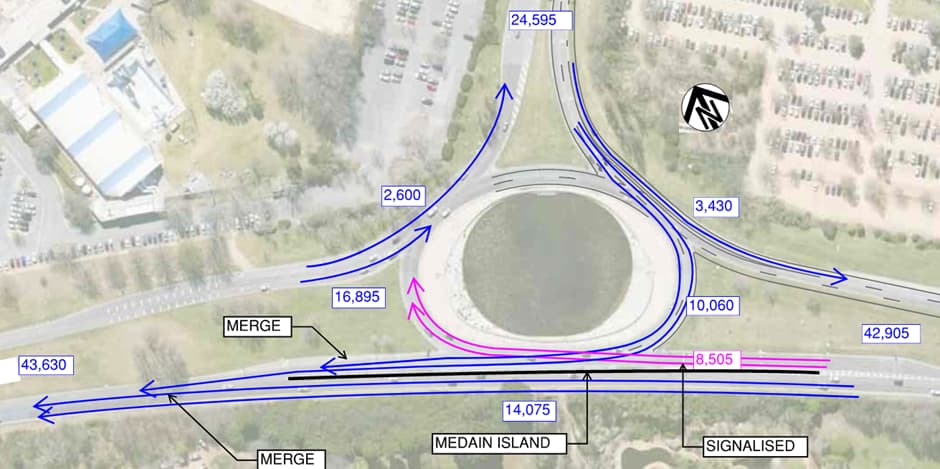I am currently working on an intersection arrangement that presents some unique challenges in terms of coding and its impact on FSI estimates. At this stage, the client is primarily focused on obtaining a Star Rating, but I am mindful that the coding decisions made now will likely influence future FSI crash estimations.
The intersection is located on a dual carriageway with a wide median and carries approximately 43,000 vehicles per day (AADT). The eastbound carriageway coding is straightforward and can be classified as a roundabout with an AADT > 15,000. However, the westbound carriageway is more complex. It consists of two free-flowing lanes that allow around 14,000 vehicles to bypass potential conflicts with roundabout traffic, while approximately 8,500 vehicles must navigate through the roundabout.
Typically, an intersection is coded within a single segment, even when multiple conflict points exist. However, given the complexity of this particular arrangement, I am wondering whether exceptions to this rule might be warranted.
Another consideration is how to accurately reflect the Vehicle Flow (AADT). While the total carriageway AADT is around 43,000, the westbound flow is split, which reduces the number of potential conflicts. Although this adjustment does not impact the Star Rating, it would have implications for FSI estimation. Additionally, while a traffic signal was introduced to mitigate eastbound queuing at the roundabout in the PM peak, the highest westbound turning flows occur in the AM.
My current approach is to select an intersection type that best represents the overall risk— in this case, a roundabout— and adjust the side-road volume to more accurately reflect actual conflict levels (targeting a range of 5,000 to 10,000 rather than > 15,000).
I would greatly appreciate any insights or guidance based on past experiences with similar coding challenges.
